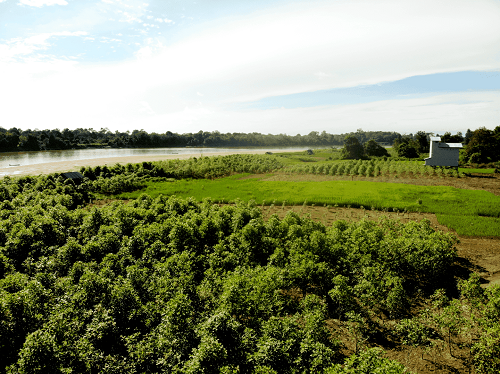Production of Kratom
How is kratom produced?
Breeding
Often failures and problems arise not because of fungi or bacteria, but because of environmental conditions. This means that the environment in the kratom is bred. So you have fewer problems if the kratom grows in its natural habitat. You have to be careful about indoor breeding in countries with other climate conditions.
Problems with breeding
Thus, it can lead to numerous problems such as brown, hanging leaf tips, leaf spots or bubbles, which can arise from overwater/underwater, poisoning, pesticides, fungi/bacteria, cold or sunburn. If the leaves become yellowish and look old, it is often due to an inadequate supply of nutrients or light, which can result from poorly nourished and/or too hard soil. If the leaves fall off, there are considerable problems which can arise from overwater/underwater. Poor light conditions, temperatures and humidity can also be a reason for this.
Kratomseeds
Of course, the seeds used to grow a kratom tree are important, as these come from abroad, it is essential to pay attention to the shipping time. If the seeds are too old, you will not succeed in breeding.
The kratomseeds can be distributed or scattered on commercially available sowing agents. After that, a thin layer of earth should be spread over it to cover the seeds.
Ground
Wind and sun should be avoided during germination. The soil should be moist but not too wet. If germination is successful, the most difficult part of cultivation is overcome.
Harvest
Since the kratomtree feels the best in its natural habitat, the mitragynine content is highest in these areas and from the end of summer to the beginning of winter.
Before the leaves fall, it is necessary to harvest them, in late autumn. If the tree is blooming, seeds can be harvested. If the sowing is successful, the leaves can be harvested within a year.
Kratom grows Originally in warm, subtropical areas. This climate is important for the optimal cultivation and growth of kratom. In countries where kratom naturally occurs and grows, it is no problem to carry out outdoor kratom cultivation in fields and plantations. If you want to grow kratom in other climate zones, you will not come around a greenhouse to ensure the optimal climate. Kratom feels particularly comfortable in moist and loose soil with high nutrient content.
A kratomtree can grow between 10 and 25 meters high, this must be taken into account if it is grown in a greenhouse.
Germination
The most difficult thing about cultivating kratomtree is germination. If germination is successful, the kratom tree will become more and more robust over time. This affects both the climate, the humidity and the soil in which it is grown. However, this is a slow process in which the plant can adapt. However, Kratom feels best in its natural habitat.
Cultivation
During cultivation on non-freely growing plantations, the plant is repopulated sooner or later. Similar to ordinary household plants, repopulation Optimally takes place in spring, so that new roots can be formed.
The optimal mitragynine content in the leaves of the kratomtree arises from natural outdoor growth, while wind, sun and temperature play an important role, which is why it is best for kratom to grow in its natural habitat. This should be taken into account during cultivation in non-natural conditions.
